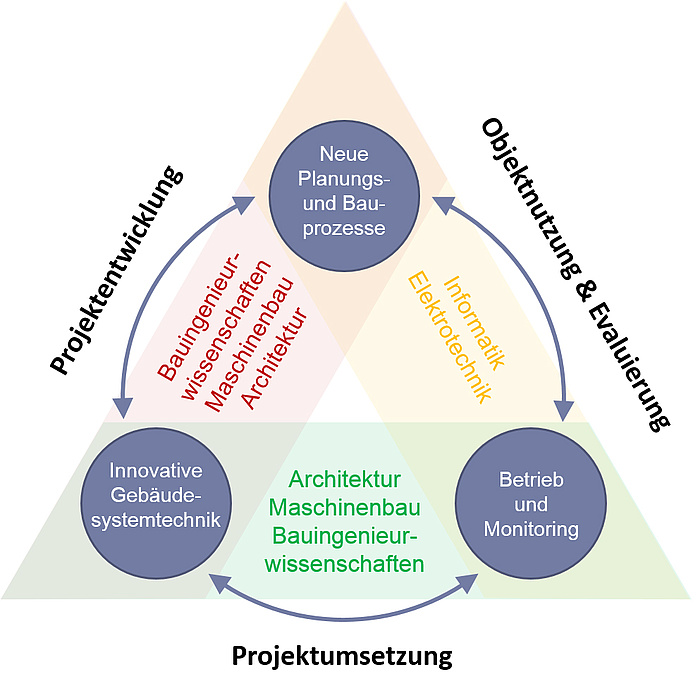To integrate or not to integrate?

Right process
Building systems should be fully taken into account in the design and implementation phases of a building, ranging from the determination of requirements to the initial operation of the building. This is an important aspect of “integrated planning”, which must also include proper project organisation (including tenders and contracts). The significance of this issue becomes evident when time and cost overruns in numerous large projects are considered. Building systems often play an important role in this context, especially if they are considered in late project stages when the degrees of freedom for design are already limited. To establish integrative approaches, it is vital to highlight their advantages compared to conventional sequential project development. Cost pressure during the planning and implementation phases of buildings is a most challenging issue in this regard. It is therefore important to investigate and demonstrate new methods and processes which allow a broad implementation of this approach under the given conditions.
Right technology
An integrative project development approach usually brings with it the question of how much technology should be used in buildings. The use of technologies is a viable option to meet the ever rising requirements on building performance. On the other hand, aspects such as flexibility of utilization, service intensity, recycling of used materials and, most important, the desire for a natural environment must be taken into account. Required functionality can be achieved by extensive use of building system technologies (“high-tech buildings”) or by deliberately using a minimum amount of technology (“low-tech building”). In the latter case, the building envelope and the building structure take more functionality. Both options need to be evaluated and further enhanced within research projects.Right operation
A substantial share of the resource consumption and the life cycle costs of a building can be attributed to operation, which is thus an important element of an integrative project approach. The increasing use of sensors and the crosslinking of data offers more and more possibilities to gain information on the building itself and its users. This information can, for example, be used for optimum control of building systems taking into account user behaviour. Experience gained from data analysis can however also be fed back into the planning process in order to learn for future projects. The processing of building data therefore represents a further research topic with high relevance. Research activities as outlined above require a high level of multidisciplinarity, which is provided by the framework of the FoE Sustainable Systems to which the research area “integrated building systems” belongs. The transformation process towards integrative approaches in building development will thus be actively supported and pushed by research within the FoE.
Kontakt
Institute of Construction Management and Economics
Lessingstraße 25/I
8010 Graz, Austria
Phone: +43 316 873 6255
Fax: +43 316 873 106255
<link int-link-mail window for sending>michael.monsberger@tugraz.at



